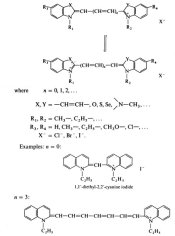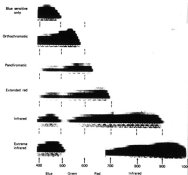I think the way to proceed is to find out who the scientist is at that company and ask him/her about the various dyes. That person would possibly learn something too, and may be intrigued about the use of their product with silver halide sensitized materials for intellectual as well as business reasons.
There was a detailed spec sheet for each one on their website. We used PBD and got less than a gm of it which was 100 times what we needed. I don't think it does much good to speculate on cost until you select the one(s) you want and know how much coverage it could afford. I would not even approach the cost question when calling, as that alerts them in the wrong way. It could turn out that a substitute dye the photo industry has never used is right there in the catalog, and that could be valuable to Ilford, InovisCoat and others who may also have wondered about it, and not had the time yet to explore the dye laser space fully, though I am very sure they are well aware of it.
Let's find out about performance first because costs vary through R&D to manufacturing quantities. Let me know if I can help - I would not be as conversant as others like PE on the subject, but our lab could call and make inquiries, if we had a few good candidates picked out.













